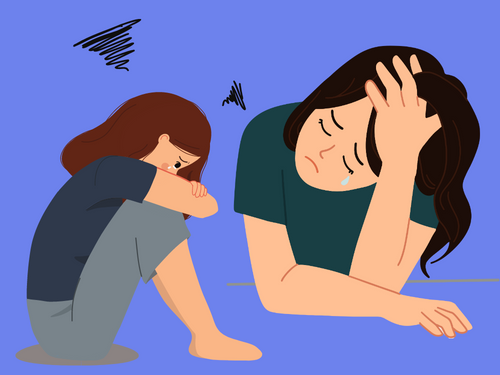Anxiety Disorders

Due to concurrent events in our daily lives, it's very hard to not experience anxiety once in a while. In basic terms, anxiety can be described as fear of the unknown.
From a professional point of view, the American psychiatric association article says anxiety is the anticipation of a future concern and is more associated with muscle tension and avoidance behavior.
Having anxiety due to something you can account for is normal. However, some people experience it as a disorder.
Mayo clinic says that people with anxiety disorders frequently have intense, excessive and persistent worry and fear about everyday situations.
Anxiety disorder can experienced everyday but with the normal anxiety it's only when one is subjected to some situations.
Anxiety disorders often involve repeated episodes of sudden feelings of intense anxiety and fear of terror that reach a peak within minutes (panic attacks).
There are several types of anxiety disorders as discussed below;
Generalized Anxiety Disorder
It usually involves a persistent feeling of anxiety which is not usually the same as occasionally worrying about things due to stressful events.
Symptoms include:
Feeling restless, wound-up, or on-edge
Being easily fatigued
Having difficulty concentrating
Being irritable
Having headaches, muscle aches, stomachaches, or unexplained pains
Difficulty controlling feelings of worry
Having sleep problems, such as difficulty falling or staying asleep
Panic Disorder.
It is usually common to people who experience panic attacks frequently.Panic attacks are sudden periods of intense fear, discomfort, or sense of losing control even when there is no clear danger or trigger.
During a panic attack, a person may experience:
Pounding or racing heart
Sweating
Trembling or tingling
Chest pain
Feelings of impending doom
Feelings of being out of control
Social Anxiety Disorder.
It is an intense fear of being watched and judged by others. People with this disorder avoid social situation like attending school and going to work. Some of them prefer to use a drug to some extent if it's something they can't avoid like maybe attending a panel interview.
People with social anxiety disorder may experience:
Blushing, sweating, or trembling
Pounding or racing heart
Stomachaches
Rigid body posture or speaking with an overly soft voice
Difficulty making eye contact or being around people they don’t know
Feelings of self-consciousness or fear that people will judge them negatively
Phobia-related disorders.
A phobia is an intense fear to specific objects or situations which is usually out of proportion. There are specific phobias and agoraphobia. With specific phobias, one may be anxious about heights, flying and receiving injections. Agoraphobia on the other hand includes the fear of using public transportation or being in enclosed places.
People with a phobia:
May have an irrational or excessive worry about encountering the feared object or situation
Take active steps to avoid the feared object or situation
Experience immediate intense anxiety upon encountering the feared object or situation
Endure unavoidable objects and situations with intense anxiety
Separation anxiety disorder.
It is the intense fear of being separated with someone you feel attached to. People with this disorder often fear that something will happen to their attachment once they are separated.
They may have nightmares about being separated from attachment figures and may also experience physical symptoms when separation occurs or is anticipated.
There is also a rare disorder called selective mutism that occurs before the age of five. It is usually associated with extreme shyness, temper tantrums most especially when one is in social situations.
There is no general cause of anxiety disorder but researchers say that genetic and environmental factors may contribute to the risk of developing an anxiety disorder.The risk factors include:
Shyness or feeling distressed or nervous in new situations in childhood
Exposure to stressful and negative life or environmental events
A history of anxiety or other mental disorders in biological relatives
Statistics of people that have anxiety disorders which are more experienced by women are as follows according to American psychiatric association:
Specific Phobia: 8% - 12%
Social Anxiety Disorder: 7%
Panic Disorder: 2% - 3%
Agoraphobia: 1-2.9% in Adolescents and Adults
Generalized Anxiety Disorder: 2%
Separation Anxiety Disorder: 0.9% - 1.9%
Anxiety disorders can be treated in different ways such as administration of some medication which help in relieving some symptoms but not actually curing the anxiety.
BY MARGARET MUGO
Tags: Signstv Anxiety Disorder Symptoms Cure Editor's Pick
Related
Share this article
Experienced and versatile writer, dedicated to using my exceptional writing and editing skills to inform and advocate. My work focuses on educating and entertaining readers on a range of topics, with a particular expertise in matters of disability.
View articles

